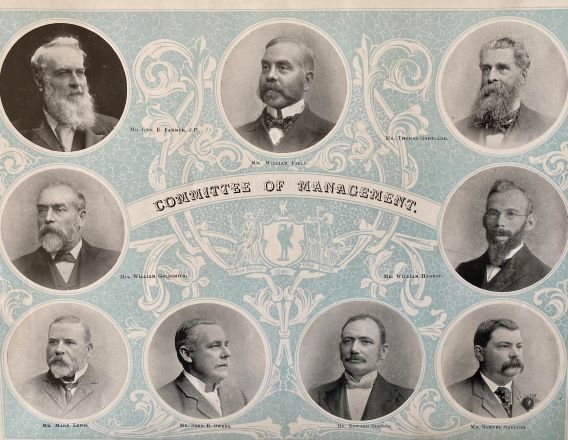1900 – the 50th Anniversary of Royal Liver
Pride in 50 Years of Service to our Members
As the Society celebrated its 50th Anniversary in 1900, it was able to reflect that it had overcome the traumatic experiences of the 1880s and whilst it did not emerge from that experience totally unscathed it must have been the stronger for it.
The Delegation System had been formed just 14 years before 1900 and whilst there were understandable, and in some instances, quite severe and challenging “tensions” between and among the various factions and stakeholders within the Society it was beginning to look strong and robust and benefiting from the roots it had put down in all four corners of Great Britain and Ireland in the 1850s and 1860s.
The growth and development of the Society over the years leading up to its 50th Anniversary in 1900 can be seen from the following:-
Accumulated Funds @ 1860 – £15,000
Accumulated Funds @ 1870 – £233,000
Accumulated Funds @ 1880 – £638,000
Accumulated Funds @ 1890 – £1.1 million
Accumulated Funds @ 1900 – £1.8 million
Having started from very humble beginnings (in a room in a Public House) 50 years earlier, Royal Liver had grown to become a true “million pound organisation” The Committee of Management in place at the turn of the 19th Century into the 20th Century must have been well pleased with this progress.

Putting some names to these historical faces from the past, we can see that the Royal Liver Board of Directors in 1900 was comprised of the following individuals (starting from top left and moving clockwise):-
George E Farmer
William Field
Thomas Gartland
William Harrop
Samuel Skelton
Edward Simpson
John E Owens
Mark Lewis
William Goldsmith
There are several names among the Committee of Management from 1900 which could now be regarded as significant personalities in the context of the Society’s overall development since the late 1800s. To give these names even more historical context and richness, it can be seen from the following photograph of the Foundation Stone of the Royal Liver Building (laid 1908) that most of these names are also recorded thereon:-

SAMUEL SKELTON – INFLUENTIAL BOARD MEMBER FOR OVER 30 YEARS – 1899 – 1932

In some ways it seems wrong, every now and again during this narrative of the history of Royal Liver Friendly Society, to pick-out a number of individuals who, more than others, left their stamp on the Society. In earlier Posts on this Website we have singled out John Bates Lawrence and Edward F Taunton for particular mention and it is also appropriate to do the same for Sam Skelton
To do otherwise would be to prevent us all from being introduced to some of the most high-profile, talented and effective members of the Society’s Senior Board Directors down through the years. There can be no doubt that Sam Skelton met this criteria and he was, during a time when there were quite a number of influential personalities at the Society’s “top table”, one of the most influential Board Members behind the Society’s continued development and growth during the years either side of the First World War and into the 1930s.
Sam Skelton’s career with the Society started in the late 1800s and it ended in the early 1930s. Both these eras are almost lost to us now in terms of an appreciation of social, professional and commercial life but, for all that, Sam Skelton is the first and most prominent individual within the Society at the turn of the 20th Century to give us something of an insight into Royal Liver before a comparatively more modern (post World War 2) business environment began, gradually, to impact on Royal Liver.
Subsequent posts to this Website will deal with the first 50 years or so of the 1900s as Royal Liver continued to develop and during most of these years (1900 – 1930) Sam Skelton played a hugely influential role as one of the prominent Directors of the Society. On a slightly more informal note, the photograph below shows Sam Skelton in the company of quite a number of Head Office Staff enjoying the facilities of the Staff Library at the Royal Liver Building in the first half of the 1900s.

